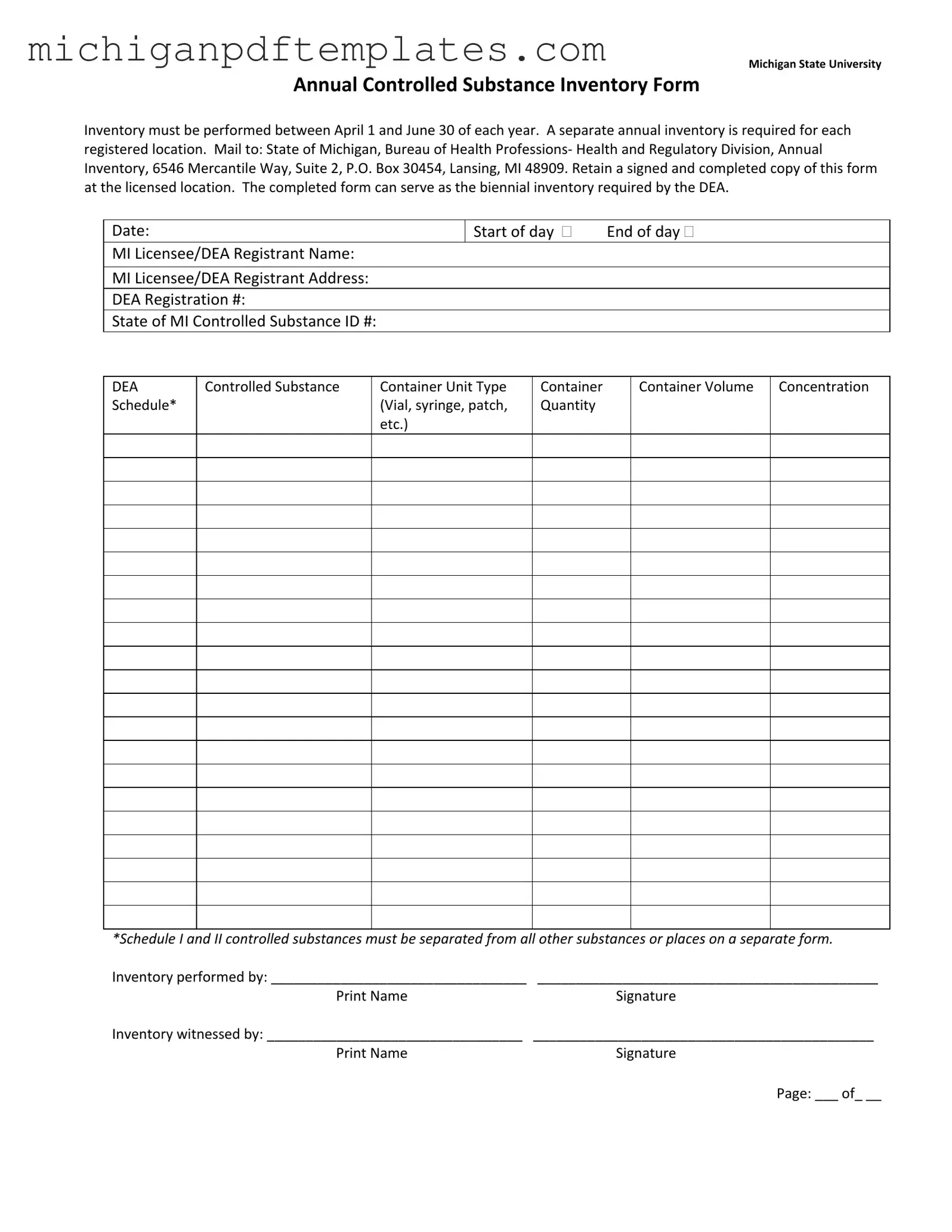The Control Substance Inventory Michigan form is a critical document for any entity handling controlled substances within the state. Each year, from April 1 to June 30, registered locations must conduct a thorough inventory of their controlled substances. This requirement ensures compliance with both state and federal regulations. It is essential to complete a separate inventory for each registered location, reflecting the specifics of the controlled substances held at that site. Once filled out, the form should be mailed to the Bureau of Health Professions in Lansing, where it will be processed by the Health and Regulatory Division. Retaining a signed and completed copy of the form at the licensed location is necessary, as it can also fulfill the biennial inventory requirement mandated by the Drug Enforcement Administration (DEA). The form captures vital information, including the DEA registration number, the Michigan Controlled Substance ID, and details about each controlled substance, such as its container type and quantity. Additionally, it mandates that Schedule I and II controlled substances be distinctly separated from other substances, ensuring clear tracking and accountability. Proper completion of the form requires signatures from both the individual performing the inventory and a witness, emphasizing the importance of oversight in the handling of these substances.
